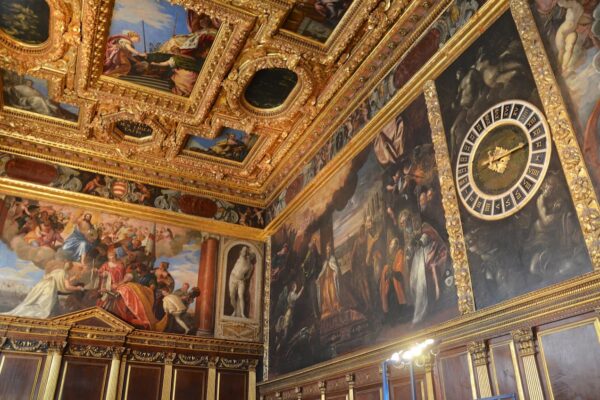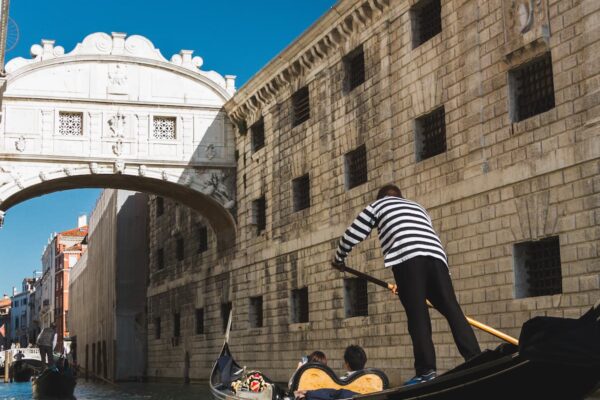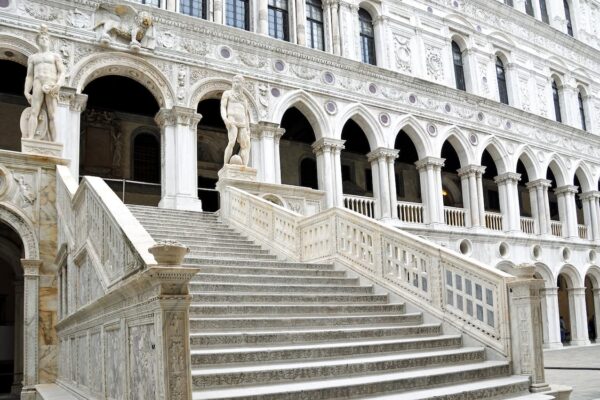The influence of Tintoretto, Veronese and the Bassano influenced the training of the Mannerist artist, who was involved in the restoration project of the pictorial decoration of the rooms of the Great Council and Scrutinio.
The Doge’s Palace houses one of his most impressive paintings, ‘The Battle of Lepanto’.
Before we begin, a brief preamble: if you plan to admire the Battle of Lepanto and all of Vincentino’s works at the Doge’s Palace in Venice, it is strongly recommended to buy your ticket online, due to the long queue that may form at the ticket office. By purchasing your ticket in advance, you will be able to enter the Palace by skipping the queue.
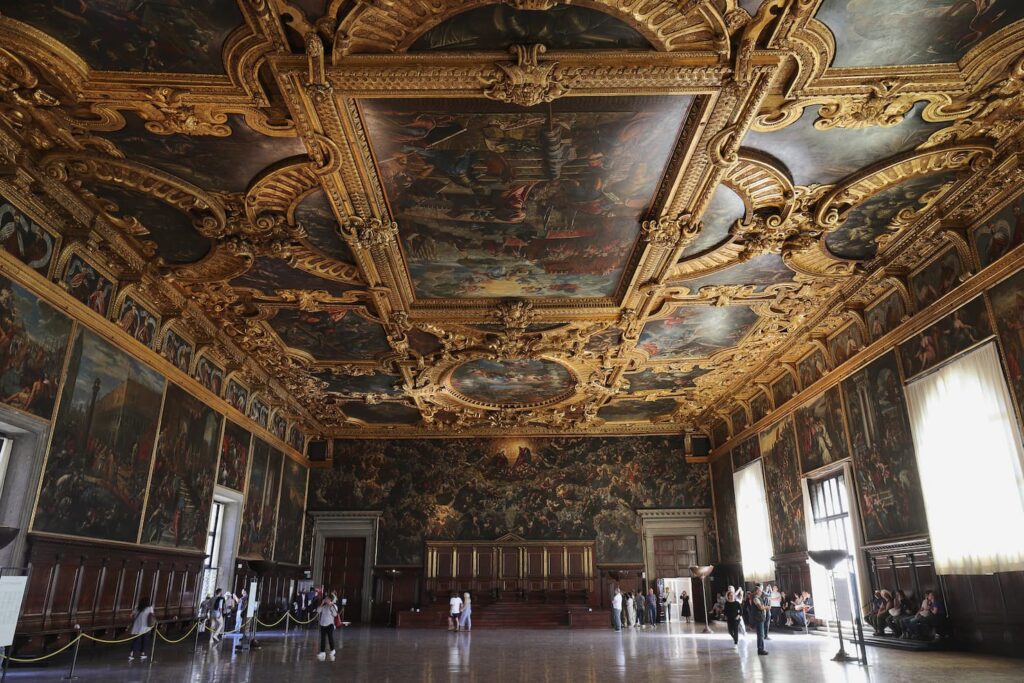
Doge’s Palace Venice skip-the-line ticket: quick access
Buy online. Choose your preferred time. Visit the Doge’s Palace of Venice, the Hall of Great Council, the prisons and more.
You can cancel for free up to the day before your visit.
The Battle of Lepanto: description and analysis
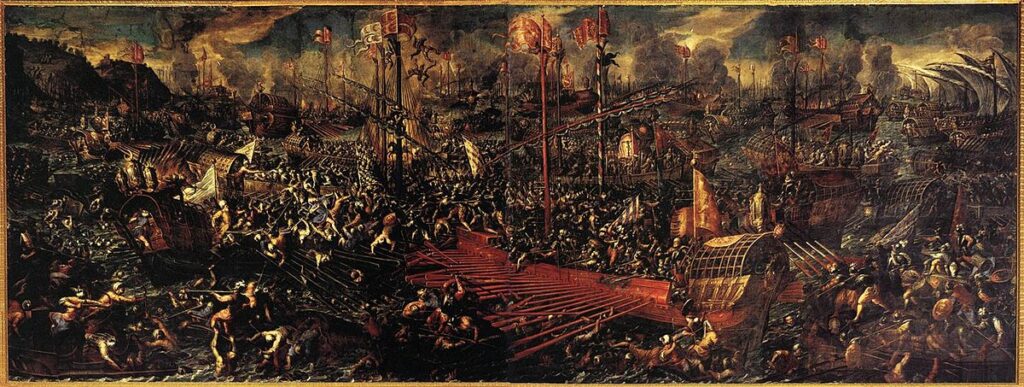
The Council of Ten initially commissioned Tintoretto to paint this work to celebrate the great battle against the Turks on 7 October 1571.
However, a devastating fire destroyed the painting in 1577.
The new canvas, commissioned from the Vicentino, surprises us with the minuteness of the details and the quantity of characters animating the scene, which well represent the clash that saw the greatest number of warships unleashed in that stretch of sea.
According to accounts, 244 warships, the famous galleys and galeas, and 90,000 soldiers and sailors were dispatched.
The painting is so detailed that we can identify some of the protagonists of the clash.
In the foreground on the right is John of Austria, the commander of the allied Spanish army, dressed in black and with a white beard, identified by his Spanish plumed helmet and sceptre of command, the future doge Sebastiano Venier, the commander of the papal army Marcantonio Colonna waving the banner with Christ on a gold background.
In the centre of the left side is Alì Pascià, the Ottoman admiral.
The Battle of Lepanto: details
- Author: Andrea Michieli (known as Il Vicentino)
- Date: 1595-1605
- Location: Hall of the Scrutiny (Doge’s Palace Venice)
- Dimensions: 520 x 1390 cm
- Technique: Oil on canvas
Who was Il Vicentino?
Andrea Michieli, known as Andrea Vicentino, was an Italian painter of the late Renaissance and Mannerism, born in Vicenza around 1542 and died in Venice on 15 May 1618. A pupil of Giovanni Battista Maganza, he moved to Venice in the 1570s and worked alongside Tintoretto at the Doge’s Palace.
He produced significant works, including the Madonna of the Rosary for Treviso Cathedral, God the Father with the Three Theological Virtues for the church of Gambara, St Charles Borromeo for Mestre Cathedral and the Ecstasy of St Francis in the Basilica dei Frari in Venice.
His paintings are kept in various picture galleries, including the National Museum of Fine Arts in Valletta. In addition, one of his works can be found in the Archpriest’s Church of Santa Maria Assunta in Loreo, Polesine.

Doge’s Palace Venice skip-the-line ticket: quick access
Buy online. Choose your preferred time. Visit the Doge’s Palace of Venice, the Hall of Great Council, the prisons and more.
You can cancel for free up to the day before your visit.
Photo credits
- La Battaglia di Lepanto: Photo via Wikimedia
